Ice Caves !
Today was a real sight-seeing day. We started by returning to those Ice Caves and discovered that there really is a cave with natural ice in it. Indeed we eventually discovered that back in the early part of the 20th century before this area had electricity and refrigerators the ice was mined to supply the iceboxes of local inhabitants. Apparently the mining ceased in the late 1940s and since that time the ice has recovered and there is more of it today then there was in those days. Is seems I may have confused some readers. Despite the heading to this entry (Concho AZ) the Ice caves are actually in New Mexico. The apparent mistake is a conflict between where we were traveling during the day and where we stayed the night. The heading to the entry gives the name of the place we spent the night.
So how does this area, which is also notable for the number of recent volcanoes that are here, develop ice ? Well the answer seems to be that during the winter cold air drops down into the lava tubes left by the volcanoes (cold air being denser than warm air). The walls of the lava tubes happen to have very good insulation properties, and some of the tubes have no through-flow of air. In these particular lava tubes the cold winters air maintains a temperature below 32°F even throughout the hot summer. Thus in those tubes local ground water freezes and does not thaw even during the heat of summer. Amazing and interesting, check it out Icecaves.com.
In addition to seeing, and learning about, the Ice Caves we hiked up the nearby Bandera Volcano for a look into the crater.
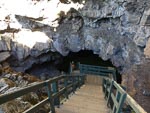
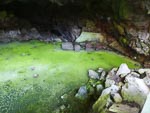

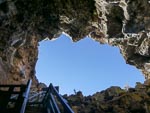
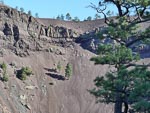


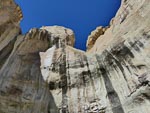
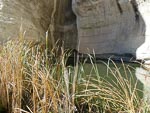

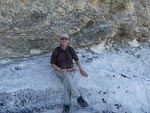
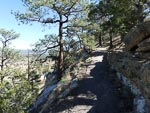
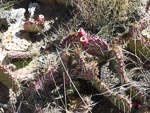
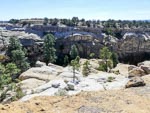


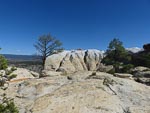
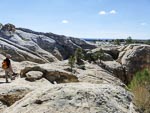

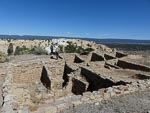
So after the ice caves we returned to El Morro a large spectacular sandstone outcropping with the intent of spending a couple of hours exploring some of the hiking trails. The trail we hiked took us around the base of El Morro and then up over the top of the plateau. Along the base of the rock we saw the water pond for which this feature is famous and which made the rock a logical living place for pre-historic indians, Spanish explorers, and later white explorers and settlers. Indeed on the face of the rocks there are large numbers of inscriptions from all of these group. Painted hands from the prehistoric peoples, inscriptions in Spanish dating back to the early 1600s, and many from the 19th and 20th century. Very interesting.
Towards the end of the day we came across an unusual camping place in Concho Valley AZ. The local community and sportsman club have built a rough camping ground on the shores of a local small lake and even installed concrete pads for parking. But we only discovered it by accident as there are no signs and from the highway it looks only like a series of dirt tracks. It was Nina's sharp eyes that found it.